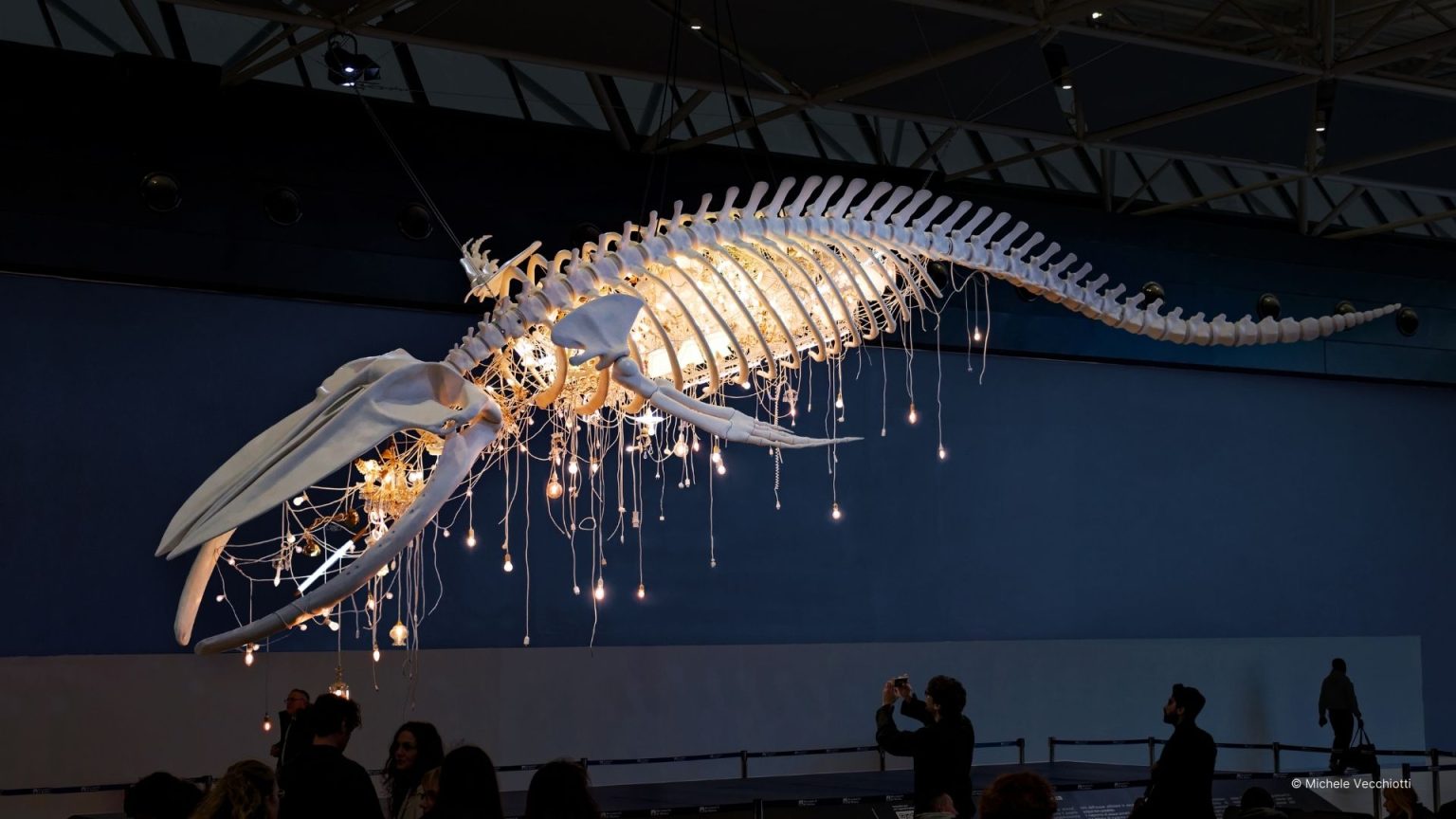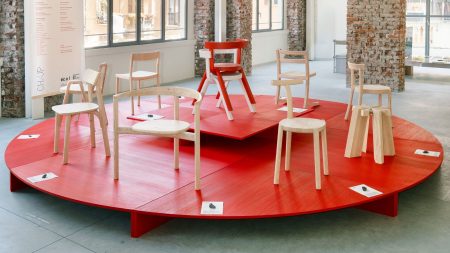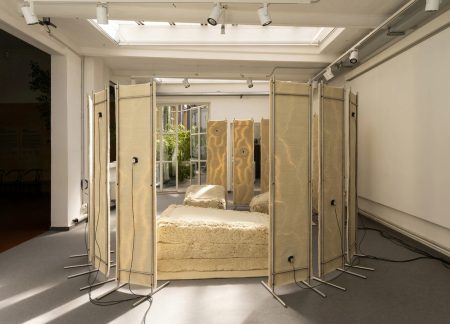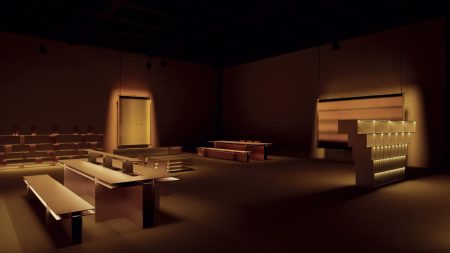In the world of design, few names evoke the kind of intriguing tension that Marcantonio does. For me, his work encapsulates a fascinating paradox—one that mirrors my own journey as a designer. My approach has always leaned toward minimalism, stripping objects down to their bare essentials, where function dictates form. Yet, I’ve always been captivated by designs that defy rules, break conventions, and tell stories that linger in the mind long after the initial glance. Marcantonio’s work embodies this duality, blending the practical with the poetic, and it’s this balance that makes him one of the most compelling designers of our time.
When I first encountered Marcantonio’s work at Rossana Orlandi’s gallery during Milan Design Week, I was struck by a piece that has stayed with me ever since: a life-sized giraffe holding a chandelier in its mouth. It was surreal, whimsical, and utterly fascinating. Growing up in a world where design was strictly functional, I couldn’t have imagined such a piece having a place in the practical world. But there it was—this unforgettable image of a giraffe cradling a chandelier, challenging everything I thought I knew about design. Marcantonio’s ability to merge artistic storytelling with functional design is what makes him a unique voice in contemporary design—a true maximalist minimalist.
Marcantonio’s work is a masterclass in turning childhood wonder and dreamlike scenarios into tangible, functional objects. Take his piece She’s in Love but She Doesn’t Know It Yet, where a chandelier hangs effortlessly from the mouth of a giraffe. The whimsy and elegance of this piece feel almost magical, and the story behind it is just as poetic as its name. Marcantonio imagines the giraffe wandering with the chandelier in her mouth, her head lost in the clouds, unaware of the emotions stirring within her. The distance between her heart and her head allows love to unfold naturally, without being controlled by reason or logic. This blend of narrative and surreal beauty elevates the piece beyond functional design to something far more evocative.
Marcantonio’s artistic training at the Accademia delle Belle Arti in Italy laid the foundation for his unique approach. By drawing on universal images—like animals interacting with everyday objects—he taps into something deeply familiar yet entirely unexpected. His pieces bridge the gap between function and fantasy, inviting us to see the world through a different lens. Another example of this is his Monkey Lamp series, where playful primates hold light bulbs, turning a simple lamp into a character-filled object. These designs challenge the notion that functionality and personality are mutually exclusive. Instead, they blend the two seamlessly, proving that objects can be both practical and delightful.
One of Marcantonio’s most touching collaborations is the LOVE Collection for Armani, a series of sculptures depicting animals of different species embracing. These are not just design objects but true works of art, crafted to convey universal emotions. The message is clear and timeless: love and unity transcend boundaries. The sculptures evoke warmth and empathy, connecting with viewers on an emotional level that few works of art achieve. Even his more whimsical pieces, like the Filicudi Chair (produced by Qeeboo), are infused with narrative. The chair’s spiky surface, which looks intimidating at first, is actually functional and comfortable, inviting viewers to confront their assumptions and engage with the unexpected. It’s this interplay between surprise and purpose that defines Marcantonio’s work.
At first glance, Marcantonio’s creations might seem maximalist—bold, elaborate, and overflowing with personality. But beneath the surface lies a minimalist core. Every piece serves a clear function, employs deliberate forms, and tells a singular story. Take She’s in Love but She Doesn’t Know It Yet again. While its design is whimsical, every detail is meticulously thought out. The height of the giraffe, the chandelier’s placement, and the overall proportions are calibrated to create an object that feels both extraordinary and believable. The same philosophy applies to his Filicudi Chair. Its design challenges practicality while remaining entirely usable. This balance between extravagance and functionality encapsulates what I call his maximalist minimalism. Marcantonio doesn’t create complexity for complexity’s sake. Instead, he distills his ideas into bold, evocative designs that are as purposeful as they are imaginative.
Marcantonio’s work is a reminder that design isn’t just about solving problems—it’s about creating moments of wonder. In a world often dominated by minimalism and practicality, his designs invite us to dream, to smile, and to embrace the unexpected. Whether it’s a lamp held by a monkey, a sculpture of animals in an embrace, or a cactus you can sit on, Marcantonio’s creations challenge us to rethink the boundaries of design. They prove that breaking the rules can lead to something extraordinary—a blend of art and design that connects deeply with those who encounter it. In an era where design often prioritizes trends and efficiency, Marcantonio’s work stands as a testament to the power of storytelling and emotion. His approach redefines what it means to create: not just objects, but experiences that linger in the heart and mind.









